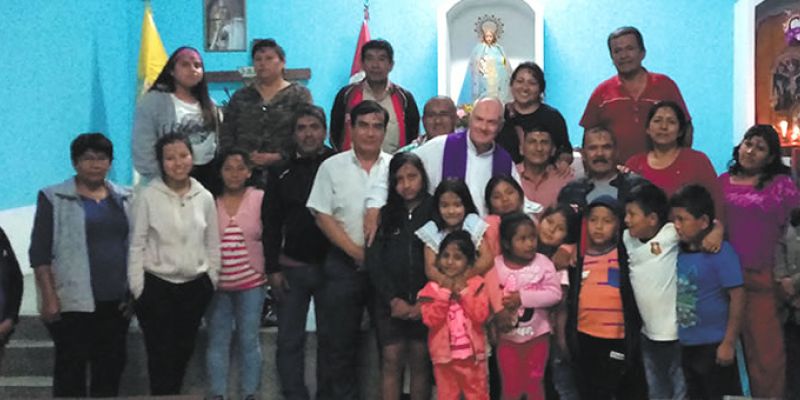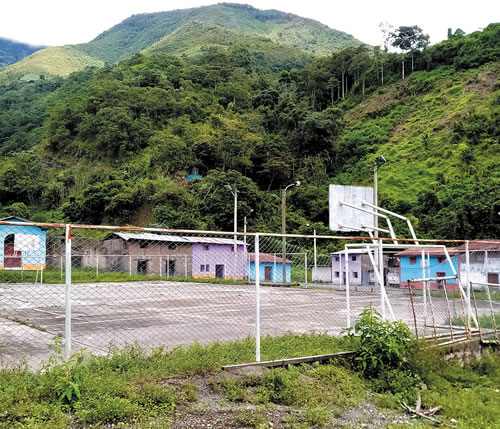
Promoting Evangelization and Justice
“I dream of an Amazon that struggles for the rights of the poor ….”
“I dream of an Amazon that sustains the richness of its cultures ….”
“I dream of an Amazon that guards its astonishing natural beauty ….”
Even before the Pope convoked the Synod on the Amazon in 2019, and issued his dramatic exhortation, Columban missionaries in South America have been eagerly engaged in campaigns to support the local Church, and to protect the ecology and peoples of the Amazon against injustice and exploitation.

In one initiative, Columbans – both foreign priests and Peruvian lay missionaries from the capital, Lima – have been reinforcing local Christian communities in the aptly named jungle locality of Monabamba, “The Place of the Monkey,” in the ancient Quechua language.
Monobamba is a truly glorious place. It is not located in the steamy Amazon Basin, but in what in Spanish is known as “Ceja de Selva,” “The Eyebrows of the Jungle,” that part of the rainforest which clings to the slopes of the Andes mountains. Thus, it combines the rich vegetation of the Amazon with the spectacular views of the high sierra.
The history and people of the area are as varied as its geography.
Before the Spanish arrived, the native inhabitants were under the rule of the fabled Inca Empire. Once the “conquistadores” from Spain drove the Incas out and left the indigenous population to be decimated by disease, people from the highlands began to drift down to the “Jungle Eyebrows.” Then, in the mid-nineteenth century, the president of the young Republic of Peru, Ramón Castilla, encouraged immigrants from central and southern Europe to settle the territory. Most came from Germany, but there were also Austrians, French and others.
In the case of Monobamba, they were Italians! They cleared portions of the jungle and established fruit, sugar and coffee plantations. When I visited the area, I was welcomed by the mayor, a fourth-generation Italian rejoicing in the surname Murgi.
So far, this paradise has escaped the threats menacing the rainforest further down in the basin, those of reckless and often illegal logging, mining and oil drilling resulting in deforestation, pollution and the displacement of indigenous peoples. However, the local Church does need help. Villages are small and widely dispersed. Roads are awful and often impassible after heavy rain. Priests are few in number. The plan of the Pope and bishops is to train and support lay catechists in each settlement, who can keep the faith alive by celebrating liturgies, undertaking religious education and preparing people for the sacraments.
These are the efforts that the Columbans are supporting. On my visit from Lima, I was privileged to accompany our lay missionaries as they journeyed from hamlet to hamlet, often on foot, in order to identify, train and encourage these local leaders.
The challenge is enormous but, with God’s help, we can rise to it, and in so doing maybe fulfill Pope Francis’s fourth and final Amazonian dream… “of Christian communities,” that might, “bestow on the Church a new face, with Amazonian features.”
John Boles is a Columban missionary priest from England who has worked in Peru since 1994.


 The Columbans are a society of missionaries, including priests and lay people, who minister to people of various cultures as a way of witnessing to the universal love of God.
The Columbans are a society of missionaries, including priests and lay people, who minister to people of various cultures as a way of witnessing to the universal love of God.